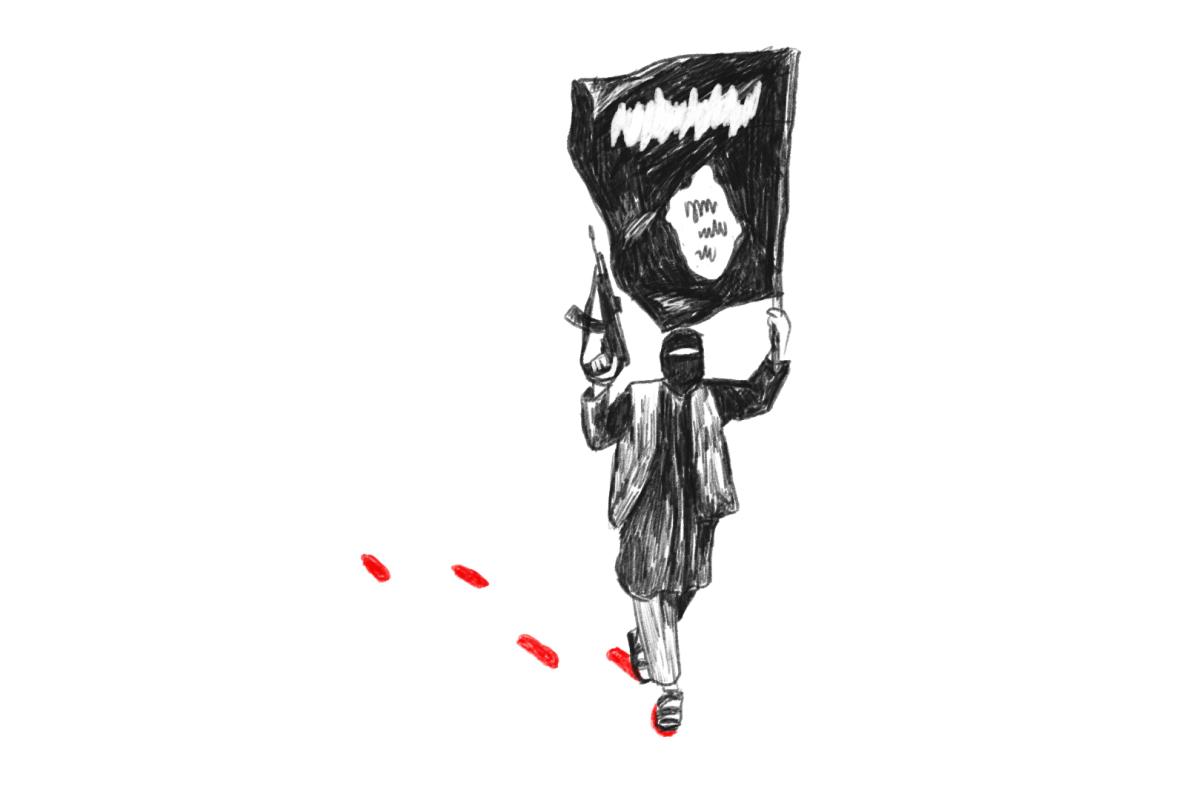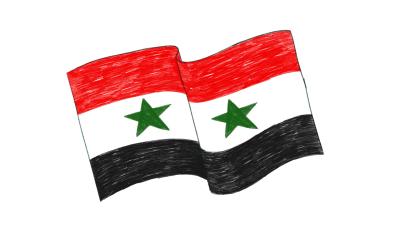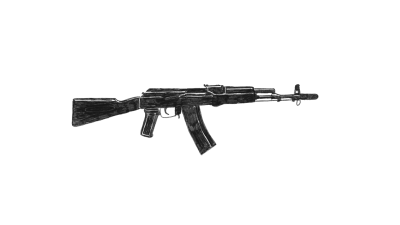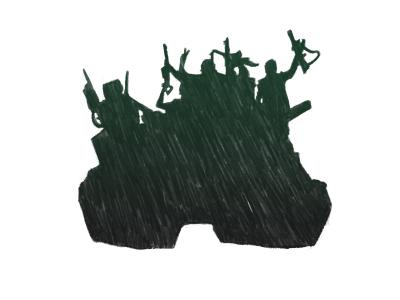
The black flag came from the East: Syria’s Arab Spring and the rise of the jihadists
In the summer of 2011, when major popular protests in the Middle East and North Africa had toppled perpetually incumbent leaders such as Egypt's Mubarak and Tunisia's Ben Ali, and while the whole world held its breath to see how the Arab Spring would unfold, a small group of men met secretly in the dilapidated suburbs of Mosul, Iraq.
The group was affiliated to al-Qaeda and called itself the Islamic State of Iraq (ISI). Since the group's leader, Abu Musab al-Zarqawi, had been killed five years earlier, their strength, influence and freedom of movement had been severely curtailed. U.S. anti-terror raids had taken a heavy toll on the group, and several leading figures had been liquidated. The so-called 'Anbar Awakening', a Sunni Muslim coalition of Iraqi tribal leaders backed by weapons from the United States, also contributed to ISI's regression. In 2008, the CIA director had already assessed that the group was "close to a strategic defeat". In spite of this, a new figure had emerged as head of ISI: an elusive, 40-year-old Islamic scholar called Abu Bakr al-Baghdadi.

West of Iraq – in Syria – the Arab Spring was in full swing, although the long-entrenched president, Bashar al-Assad, had not resigned, unlike the leaders of Egypt and Tunisia. Nor was he in the process of meeting the opposition's demands for reforms, as the monarchs in Jordan and Morocco were.
Instead, in the spring of 2011, Assad had cracked down hard on the peaceful civilian protesters, and as the months went by, the peaceful protests developed into a bloody civil war.
While world politicians watched in horror as it became clear how far Assad would go to retain power in Syria, al-Baghdadi and his men in Iraq welcomed the new chaos.

“Al-Baghdadi quickly saw the situation in Syria as an opportunity for resurrection,” explains Dino Krause, a PhD student at DIIS and member of the “Transnational Jihad” research project.
“In Syria, al-Baghdadi saw a window of opportunity. He predicted that a large enough proportion of Sunni Muslim Syrians, who had long felt marginalised by Assad's Alawite rule, would not oppose the group's presence. In addition, Assad was busy suppressing peaceful civilian protesters and the Free Syrian Army (FSA). The jihadists therefore calculated that Assad would not spend resources on targeting them,” expounds Dino Krause.
- Inspired by the Arab Spring, Syrians began protesting in the Spring of 2011. The president, Assad, violently cracked down the uprisings and the situation quickly escalated into civil war.
- It is estimated that around 500.000 have been killed, 5.6 millions have fled the country and 6 millions are internally displaced.
- The protests, that began in March 2011, were against violations of human rights, lack of economic opportunities and four decades of authoritarian one-party rule headed first by Hafez al-Assad (1971-2000) and since 2001, his son, Bashar al-Assad.
- The protests against the regime evolved into war, where both secular and islamist rebel groups participated and a proxy war where regional and global powers, including the US, Russia, Turkey, Iran and Saudi-Arabia, are fighting - or have fought - for influence.
- Today, the war is largely about realpolitik and rivalry and very little about the rights of the Syrian people.
- Today, Bashar al-Assad has regained control over a large part of Syria, but it is still uncertain how he will manage to rebuild the country and gain support from the Syrian population.
Source: Dagbladenes Bureau
The fragmentation of the jihadists
Al-Baghdadi had no strong opinion on whether Assad should step down as president, although he fundamentally believed all heads of state were in conflict with Islam. What al-Baghdadi was interested in was territory. He therefore sent Syrian-born Abu Mohamad al-Julani and a small group of fighters across the border into Syria.
They planted the seed of what quickly became known as the al-Nusra Front: al-Qaeda's first franchise in Syria was a reality. During 2012, al-Nusra burgeoned; not least because foreign fighters from around the globe were now travelling to Syria to join the struggle. It was Assad's particularly brutal violence against its own people that mobilised mainly young, Muslim men.
But in 2013, al-Baghdadi was linked to both al-Qaeda and al-Nusra; something that would be a crucial factor in the future.
“Al-Baghdadi increasingly positioned himself as an independent leader of an independent group, and he claimed al-Nusra as his own. Al-Qaeda – and al-Nusra – disagreed,” said Dino Krause
Consequently, al-Baghdadi severed his ties to al-Qaeda and renamed his group ISIS - Islamic State of Iraq and al-Shams (Levant). The fragmentation was not only organisational; there were clear differences between Zawahiri's al-Qaeda and Baghdadi's ISIS.
“Although the dream of a caliphate was strong in both groups, al-Qaeda had typically been reluctant and patient on that front. They had been nervous about declaring the caliphate prematurely and had considered it a long-term plan. Al-Baghdadi, on the other hand, was very clear in his grand ambitions to create an Islamic caliphate,” says Dino Krause.

ISIS also distinguished itself from al-Qaeda by endorsing the idea of Takfiri. In Islamic discourse, this concept describes the excommunication of Muslims. Islamic State therefore had no problem executing, for example, Shia Muslims or Sunni Muslim tribes who would not cooperate. This was an act that was unheard of with al-Qaeda.
“What we saw with ISIS was very brutal behaviour against anyone who did not adhere to – or belong to – their very strict interpretation of Islam,” says Dino Krause.
It only became clearer as time went on, that ISIS was gaining more and more territory in Iraq and Syria.
“There were some who felt that ISIS was a fairly effective and well-organised authority. In some places, conditions improved significantly under ISIS control. But before long, the brutal law enforcement, the executions and the religious police, the Hisbah, also arrived,” says Dino Krause.
The caliphate is declared
On June 29, 2014, ISIS declared their Islamic caliphate, stretching from Aleppo in Syria to Diyala in Iraq. Al-Baghdadi was appointed caliph, and the group now called itself simply Islamic State (IS).
Al-Qaeda's distant goals had now become a reality through IS. And even more foreign fighters, as well as Muslim women and children, travelled to the caliphate.
When IS was at its peak, it had approximately 100,000 fighters – 30,000 of whom were foreign fighters – and controlled territory of approximately 100,000 square kilometers; an area more than twice the size of Denmark.
“Islamic State was not actually novel in terms of the transnational jihadist movement if you look at their methods or goals. Al-Qaeda's goal has always been – and still is – to create a caliphate. The Taliban have long controlled territory and behaved like an official authority in parts of Afghanistan. During the war in Afghanistan in the 1980s, many foreign fighters travelled to the country to join the Mujahideen struggle. And brutality is, of course, not unique to Islamic State either,” explains Dino Krause.
Yet there are good reasons why the eyes of the whole world were fixated on the organisation for years.
“Islamic State is particularly unique because the organisation succeeded in upscaling all these jihadist goals and means. Their "state project" was unprecedented in recent times, and their brutality and radicalism have at times made al-Qaeda look almost tame. The number of foreign fighters who joined the organisation – and the fact that they came from so many different regions of the world – was very special,” says Dino Krause.
In addition, all of this was communicated to the world via Islamic State's extremely well-oiled propaganda machine, with HD videos, glossy online magazines and an ability to grip the world's attention with extreme violence.
Greatness and decline
As is well documented, following their heyday period of 2014 - 2016, Islamic State subsequently went on to lose all its territory. Abu Bakr al-Baghdadi was killed during a U.S. air strike last October, prompting former U.S. President Trump to declare the organisation "eliminated".

There are lingering questions regarding what it meant for the transnational jihadist movement that Islamic State took the opportunity to use the war in Syria as a testing ground to live out their jihadist aspirations and methods. What did Islamic State – and the other jihadist movements – learn from their years in Syria and Iraq?
“It is an interesting but very difficult question to answer. While Islamic State is now greatly reduced, their rhetoric is far from defeatist: they speak of an expected setback caused by an alliance between the "Zionist crusaders". A minor obstacle in a much longer battle that continues to be fought,” explains Dino Krause.
Whether this is pure propaganda or not is difficult to ascertain with any certainty.
“It would be extremely interesting to find out how the Islamic State leadership interprets and addresses the defeat internally. Have they learned anything from the last ten years? Have they changed strategy? However, as they have a vested interest in appearing to be strong and focused, it is obviously not something they talk about in public.”
On the other hand, having witnessed the rise and fall of Islamic State, Al-Qaeda appear revitalised and vindicated in their approach.
“It seems that al-Qaeda feel affirmed in thinking that Islamic State declared their caliphate prematurely. In addition, they believe that the extreme violence and strict rules of IS backfired – that you cannot retain territory if you do not have at least some support from the people who live under your control. And this is something IS largely lost due to their radicalism and violence. It is also an argument posed by some IS fighters who have since conducted interviews.”
Islamic State's new battlegrounds
Islamic State no longer controls any territory, yet any assertion that the organisation has been completely "eliminated", as Donald Trump claims, is unlikely. Just a couple of weeks ago, ten people died after a suspected IS attack in Iraq's Salahuddin province. In addition to the "sleeper cells" in Iraq and Syria, IS has also managed to ally itself with Islamist groups in the Sahel region, and more recently, also in DR Congo, Mozambique and Burkina Faso.
“It gets little attention, but Islamic State has been quite successful in creating contacts and alliances in conflict areas, especially in Africa. Utilising local conflicts in this way is a well-known tactic of al-Qaeda,” says Dino Krause.
He explains that in most cases, e.g. in relation to the IS-affiliated groups in DR Congo and Mozambique, there is very little information regarding what this cooperation between local groups and Islamic State in Syria and Iraq actually entails. But from other IS-affiliated groups, e.g. in the Sahel, it is known that such groups operate relatively autonomously, are themselves responsible for recruiting fighters, and are self-sufficient in terms of income sources and access to weapons. Nonetheless, the affiliated groups promote IS ideology, and they tend to adapt to IS guidelines regarding military strategies and offensive tactics.
There is, according to Dino Krause, good reason to continue to monitor the development of Islamic State.
“In 2010, al-Baghdadi and his men had also been "defeated" by the Iraqi and U.S. military. But when Assad began waging war against his own people during the Arab Spring, they were given a unique window of opportunity in Syria, and they took it. In a short time, their primary battlegrounds included not only Iraq, but also Syria. And it is not unthinkable that they will again succeed in finding conflict zones that give them similar opportunities for development and growth, e.g. in the Sahel region,” says Dino Krause.
- IS started as an al-Qaeda affiliated group in Iraq under the name al-Qaeda in Iraq (AQI). The group was founded and led by Abu Musa al-Zarqawi
- The group attempted to start a secteruan conflict in war-torn Iraq. In 2006, Zarqawi is killed in an American airstrike. The group changes its name to Islamic State in Iraq (ISI)
- In 2010, Abu Bakr al-Baghdadi becomes the leader of the group. In 2011, he sends men into Syria to fight and gain territory. This groups is known as Jabhat al-Nusra.
- In 2013, al-Qaeda, al-Nusra and al-Baghdadi have a fallout. Al-Baghdadi now calls his group the Islamic State in Iraq and the Levant (ISIS or ISIL)
- In June 2014, al-Baghdadi declares his Islamic caliphate, that covers large parts of Syria and Iraq. The name is now: Islamic State (IS). During Islamic State’s reign, Sharia law is implemented and brutal public executions and killings happen on a regular basis.
- In its heyday, IS disposes of 100.000 warriors and controls an area of approximately 100.000 squaremeters.
- From 2015 and forward, IS quickly loses warriors, territory and impact. Al-Baghdadi is killed by American forces in 2019.
- Today, the group is strongly reduced, but has succeeded in creating affiliations with other islamist group, especially in Africa.
Source: CNN
Parts of this article are informed by the book Black Flags by Joby Warrick

